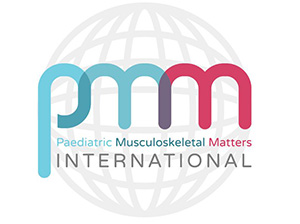PRES update regarding COVID-19 vaccination in children with rheumatic diseases
Update July 2022
Covid-19 in rheumatic patients
In general, the occurrence and clinical presentation of COVID-19 among children with rheumatic diseases (RD) does not differ from that of the general population; Studies analyzing the risk-factors for hospitalization among 3,000 adult patients with RD from 40 countries, based on data from the Global Rheumatology Alliance, found an increased risk for hospitalization (46%) and death (9%) among SLE and vasculitis patients. The major risk-factors for hospitalization were history of cardiovascular disease, Afro-American, Hispanic or Asian origin, and prednisone dose of > 10 mg/day. These studies suggested a protective role of TNF inhibitors and/or synthetic DMARDs regarding hospitalization (1-3).
Covid-19 in pediatric rheumatic patients
607 CYP with RMDs <19 years old from 25 different countries with SARS-CoV-2 infection were included, the majority with juvenile idiopathic arthritis (JIA; n=378; 62%). Forty-three (7%) patients were hospitalised; three of these patients died. Compared with JIA, diagnosis of systemic lupus erythematosus, mixed connective tissue disease, vasculitis, or other RMD (OR 4.3; 95% CI 1.7 to 11) or autoinflammatory syndrome (OR 3.0; 95% CI 1.1 to 8.6) was associated with hospitalisation, as was obesity (OR 4.0; 95% CI 1.3 to 12).
The European Registry collected data on 607 CYP with RMDs <19 years old from 25 different countries with SARS-CoV-2 infection were included, the majority with JIA; n=378; 62%. Forty-three (7%) patients were hospitalised; three of these patients died. Compared with JIA, diagnosis of SLE, mixed connective tissue disease, vasculitis, or other RMD (OR 4.3; 95% CI 1.7 to 11) or autoinflammatory syndrome (OR 3.0; 95% CI 1.1 to 8.6) was associated with hospitalisation, as was obesity (OR 4.0; 95% CI 1.3 to 12).
. Due to the database design and inherent reporting bias, this is likely an overestimate; suggesting that overall outcomes among this population appear to be generally good, with mild infection (4). New ref 4
Covid-19 complications in children without RD
Regarding healthy children, multisystem inflammatory syndrome (MIS-C) resembling Kawasaki disease was described following COVID-19 (5), in most cases involving the heart with multisystem inflammation, shock and multi-organ failure (6).
Chronic COVID-19 syndrome was described in children, similar to what is seen in adults. Data from an Italian registry describe that more than half of the children recovering from COVID-19 had at least one ongoing symptom 120 days after the disease, and 43% experienced symptoms during daily activities. Major symptoms were tiredness, musculoskeletal pain, headache, insomnia, difficulty in breathing and palpitations, similar to those observed in the adult population (7). Data from the UK show that 13% of children ages 2-11 years and 14% of children ages 12-16 years had ongoing symptoms 5 weeks after their primary COVID-19 disease. This means that 1 of every 7-8 children with COVID-19 had ongoing symptoms (8).
A review summarizing data from several countries, analyzed 1,475 cases of children hospitalized with COVID-19. Among them, 615 (42%) had moderate or severe disease (9). Still, the disease is present in children, and hospitalization in adolescents 12-17 years was reported (10).
Currently, as COVID-19 cases are declining in some countries, primarily due to high vaccination rates in adults, the disease age distribution has changed: the highest COVID-19 incidence is seen in children and adolescents.
In addition, closing schools and kindergartens during the pandemic caused psycho-social and educational harm to children and adolescents, including anxiety, eating disorders, behavioral changes, decreased ability to study and concentrate, and increased violent and delinquent behaviors (11).
All the above suggest significant morbidity in children due to the pandemic, and might affect vulnerable pediatric patients with RD.
As the pandemic is ongoing, it is possible that COVID-19 cases may increase substantially in the setting of low vaccination rates and/or high transmissibility of new variants (for example, the new delta or Omicron variants), affecting mainly the unvaccinated pediatric population.
Covid-19 vaccines
In late 2020, the results of the Phase 1/2 and Phase 3 research on the efficacy and safety of vaccines developed by Pfizer (BNTb262) and Moderna (mRNA-1273) were published; reporting an efficacy of about 95%. Cumulative data continue to show efficacy and safety.
The EULAR COVID-19 Vaccination (COVAX) Registry is an observational registry that includes 1,519 adult patients with rheumatic and musculoskeletal diseases who were vaccinated against COVID-19. The safety profiles for COVID-19 vaccines in RD patients were reassuring. Most adverse events were the same as those in the general population: non-serious and involved short-term local and systemic symptoms. Only 0.1% reported severe adverse events. Most patients tolerated vaccination well, with rare reports of RD flare (5%; 1.2% severe) (12).
A large, prospective, multicenter study investigated immunogenicity, efficacy, and safety of the COVID-19 vaccination among 686 adults with RD and 121 controls. Vaccination resulted in an adequate immunogenic response with an acceptable safety profile in most patients with RD. Immunogenicity was severely impaired by rituximab and mildly impaired by methotrexate. Post-vaccination disease activity remained stable in most patients (13). A study examined the humoral response of 264 adult rheumatic patients following vaccination. A good humoral response was seen in 86%, with minor vaccine-related side-effects and no effect on the rheumatic disease (14).
Real world observational data has been collected on 138 patients aged over 16 years with auto inflammatory diseases receiving long-term biologic therapies. The case mix included CAPS, Schnitzlers Syndrome, TRAPS, recurrent pericarditis, FMF, MKD, AOSD, Cattleman’s disease and VEXAS, 93% were on anti IL-1 agents, 54% received the adenoviral vector AstraZeneca vaccine and the remained received the Pfizer BioNTech mRNA vaccine. Systemic upset mimicking a disease flare was reported by 18% but both vaccines were well tolerated, with no serious adverse events. The reported local and systemic side effects were self-limiting, required no change in management of their autoinflammatory disease, and were consistent with those reported in trials (ref DOI: 10.1093/rap/rkab043) . Unpublished follow up data now includes a total of 320 vaccine doses with another 31 patients being vaccinated and 48 patients receiving booster doses with similarly reassuring outcomes.
These studies and additional data confirm that most DMARDs can be safely continued during vaccination. Withholding treatment with mycophenolate and abatacept, especially when combined with methotrexate, may be considered.
Clinical trial data (15), as well as data from a vast vaccination effort in Israel (16) show that vaccination of people 16 years and older is safe and has excellent efficacy, around 95% in preventing disease.
In a multinational, placebo-controlled trial with 2,260 adolescents, the immunogenicity, efficacy, and safety profiles observed in children ages 12-15 was similar to that of young adults. Adverse events were mild, mainly local reactions, pain at the injection site. Systemic side effects – mainly weakness, headache and chills were mild and resolved within 24-48 hours. No major side effects were reported (17).
In addition to preventing COVID-19, the vaccine prevented asymptomatic infections with an efficacy of 80%-90% (18) and reduced the viral load (19). This means that in addition to its excellent effect on reducing the disease, the vaccine limits the infective ability of the virus.
Based on clinical studies, several regulatory agencies extended approval for the vaccine to the age of 5, including authorities in Canada, USA-Advisory Committee on Immunization Practices (ACIP) (FDA approval), the UK, and the European Union EMA (20-22). Recent studies on juvenile patients with rheumaric and autoinflammatory diseases among others, proved immunogenicity, safety and efficacy of the vaccine. (23-24)
Vaccine and Myocarditis
There are reports of increased risk for myocarditis following vaccination (25-27). These are rare, given the hundreds of millions of vaccine doses administered, and have been reported administration of the mRNA COVID-19 vaccine, particularly amongst male adolescents and young adults more often after getting the second dose, and typically within several days after COVID-19 vaccination. Most patients responded well to treatment and rest, and had an excellent outcome. In 95% of cases, the symptoms were mild and resolved quickly. According to the Centers for Disease Control and Prevention (CDC), 300 cases of myocarditis and pericarditis (inflammation of the heart) were documented among the 20 million adolescents and young adults vaccinated in the USA (23). From extrapolation of the known reported rate of myocarditis in the 16-19 years old age group, the risk is about 1:6,000 in boys after receiving the second dose. In 95% of cases, symptoms are mild and resolve quickly. The CDC and ACIP continues to recommend COVID-19 vaccination for everyone 12 years of age and older, within the context of COVID-19 illness and related, possibly severe complications (25).
Vaccines and MIS-C
The benefits of COVID-19vaccination following MIS-C outweighs the theoretical risk of new MIS-C.
The PRES WPs are actively collecting data on MIS-C cases and MIS-C children who were vaccinated with the Covid vaccines following their MIS-C; the data demonstrates safe outcome. It is advised to register patients in the database.
link to the survey: https://www.surveymonkey.com/r/KJCGVZP
The international registry HyperPED-COVID, is a coordinated international action involving PRES, ESID, ISSAID and RITA-ERN , is collecting data of patients with MIS-C and will include data on the safety and efficacy of Sars-Cov2 vaccines in these patients.
Link to the registry : https://www.printo.it/projects/ongoing/31
Conclusions
To summarize, it seems that the vaccine is as safe and effective for children with rheumatic diseases, as it is among the healthy pediatric population. It seems that despite the changing variants of the virus, the Covid-19 vaccine is still highly effective. Data are still being gathered daily, but so far there is no evidence of disease flare following vaccination. The risk for myocarditis is low. Vaccination should be considered for each child separately, based on the known COVID-19 status in a specific country. For children recovering from COVID-19, vaccine can be given no sooner than 3 months after the disease resolved.
Summary of PRES recommendations
Updated July 2022
• The risk and morbidity of acquiring COVID-19 appears to be relatively similar among healthy children and those with rheumatic diseases, pending prospect data collection
• The new COVID -19 vaccines are approved by various health authorities for patients 5 years of age and older, and are recommended for pediatric rheumatic patients, as well.
• PRES recommends that paediatric rheumatology patients should be vaccinated against COVID-19 using vaccines approved by relevant national health authorities for children in this age group.
When using prednisone above 20 mg/day or above 0.5mg/kg/day consult the rheumatologist.
• It is advised to consult your pediatric rheumatologist to assess your disease activity and medications before deciding about vaccination.
• It is important to establish registries regarding the efficacy, immunogenicity and safety of COVID-19 vaccines for patients with pediatric rheumatic diseases.
• The PReS vaccination study group is conducting an ongoing registry study that aims to evaluate the safety and immunogenicity of the COVID-19 vaccines among patients with childhood RD. So far there are no safety concerns following available data on about 100 patients. New evidence support the efficacy of the vaccines.
• It is advisable to adhere to the annual flu vaccine however; consider not to give the influenza vaccine together with the COVID-19 vaccine (best 2 weeks apart).
• The vaccine will most likely protect the patient from getting a severe course of COVID-19, but it is still possible that vaccinated people can carry the virus and be contagious to others. Therefore, vaccinated patients should still wear masks and practice physical distancing, according to the local health guidelines.
• A child who has recovered from COVID-19 can receive a vaccine at least 3 months after the day of full recovery. This is valid for the first vaccine dose as well as the second dose. In situations where a child had COVID-19 after receiving the first dose, the second dose can be given at least 3 months following the day of full recovery.
• According to the local health authority a 3ed booster vaccine is recommended.
• Following MISC it is suggested to vaccinate according to the local health authorities
• Following MISC It is recommended to vaccinate after 6 months, following full clinical recovery, and normal cardiac function. If IVIG was not given as MISC therapy, consider to vaccinate after 3 months.
• For children who had MISC following Covid vaccine, it is recommended to withhold further vaccination
References
1) Gianfrancesco M, Yazdany J, Robinson PC. Epidemiology and outcomes of novel coronavirus 2019 in patients with immune-mediated inflammatory diseases. Curr Opin Rheumatol United States; (2020) 32:434-40.
2) Pablos JL, Abasolo L, Gracia JMA-, Blanco FJ, Blanco R, Castrejón I, et al. Prevalence of hospital PCR-confirmed COVID-19 cases in patients with chronic inflammatory and autoimmune rheumatic diseases. Ann Rheum Dis (2020); 217763.
3) Gianfrancesco M, Hyrich KL, Al-Adely S, Carmona L, Danila MI, Gossec L, et al. Characteristics associated with hospitalisation for COVID-19 in people with rheumatic disease: data from the COVID-19 global rheumatology alliance physician-reported registry. Ann Rheum Dis. (2020) 79:859–66.
4) Lianne Kearsley-Fleet 1, Min-Lee Chang 2, Saskia Lawson-Tovey 3 4, Ruth Costello 1, Šárka Fingerhutová 5, Natálie Švestková 5, et al
Outcomes of SARS-CoV-2 Infection among Children and Young People with Pre-existing Rheumatic and Musculoskeletal Diseases"
Ann Rheum Dis 2022;0:1–8. doi:10.1136/annrheumdis-2022-222241
5) Mary Beth F. Son MB, Nancy Murray N Friedman K, et al. Multisystem inflammatory syndrome in children — initial therapy and outcomes. N Engl J Med. (2021) Jun 16. doi: 10.1056/NEJMoa2102605.
6) Feldstein LR, Tenforde MW, Friedman KG, Newhams M, Rose EB, Dapul H, et al. Characteristics and outcomes of US children and adolescents with Multisystem Inflammatory Syndrome in Children (MIS-C) compared with severe acute COVID-19. JAMA. (2021) Mar 16;325(11):1074–1087.
7) Buonsenso D, Munblit D, De Rose C, Sinatti D, Ricchiuto A, Carfi A, et al. Preliminary evidence on Long COVID in children. Acta Paediatr. 2021 Jul;110(7):2208-2211.
8) Ludvigsson JF. Case report and systematic review suggest that children may experience similar long-term effects to adults after clinical COVID-19. Acta Paediatr. (2021) Mar;110(3):914–921.
9) Liguoro I, Pilotto C, Bonanni M, Ferrari ME, Pusiol A, Nocerino A, et al. SARS-COV-2 infection in children and newborns: a systematic review. Eur J Pediatr. (2020) Jul;179(7):1029–1046.
10) Havers FP, Whitaker M, Self JL, Chai SJ, Kirley PD, Alden NB, et al. Hospitalization of Adolescents Aged 12–17 Years with Laboratory-Confirmed COVID-19 — COVID-NET, 14 States, March 1, 2020–April 24, 2021. MMWR Morb Mortal Wkly Rep. (2021) Jun 4;70(23).
11) de Figueiredo CS, Sandre PC, Portugal LCL, Mázala-de-Oliveira T, da Silva Chagas L, Raony Í, et al. COVID-19 pandemic impact on children and adolescents’ mental health: Biological, environmental, and social factors. Prog Neuropsychopharmacol Biol Psychiatry. (2021) Mar 2;106:110171.
12) Machado, S. Lawson-Tovey, K. Hyrich et al. Covid-19 vaccine safety in patients with rheumatic and musculoskeletal disease. Ann Rheum Dis. (2021) June; 80 (Supplement 1):199.
13) V. Furer, T. Eviatar, D. Zisman et al. Immunogenicity and safety of the BNT162b2 mRNA COVID-19 vaccine in adult patients with autoimmune inflammatory rheumatic diseases and in the general population: a multicentre study. Ann Rheum Dis. (2021) Jun 14: 220647.
14) Braun-Moscovici Y, Kaplan M, Braun M, Markovits D, Giryes S, Toledano K, Tavor Y, Dolnikov K, Balbir-Gurman A. Disease activity and humoral response in patients with inflammatory rheumatic diseases after two doses of the Pfizer mRNA vaccine against SARS-CoV-2. Ann Rheum Dis. (2021) Jun 18:annrheumdis-2021-220503.
15) Pfizer-Biontech Covid-19 Vaccine (BNT162, PF-07302048) Vaccines and related biological products advisory committee briefing document. https://www.fda.gov/media/144246/download
16) Dagan N, Barda N, Kepten E, Miron O, Perchik S, Katz MA, et al. BNT162b2 mRNA Covid-19 Vaccine in a Nationwide Mass Vaccination Setting. N Engl J Med. (2021);384(15):1412-1423.
17) Frenck RW, Klein NP, Kitchin N, Gurtman A, Absalon J, Lockhart S, et al. Safety, Immunogenicity, and Efficacy of the BNT162b2 Covid-19 Vaccine in Adolescents. N Engl J Med. (2021) May 27; DOI: 10.1056/NEJMoa2107456
18) Tande AJ, Pollock BD, Shah ND, Farrugia G, Virk A, Swift M, et al. Impact of the COVID-19 Vaccine on Asymptomatic Infection Among Patients Undergoing Pre-Procedural COVID-19 Molecular Screening. Clin Infect Dis. (2021) Mar 10; ciab229. doi: 10.1093/cid/ Online ahead of print
19) Levine-Tiefenbrun M, Yelin I, Katz R, Herzel E, Golan Z, Schreiber L, et al. Initial report of decreased SARS-CoV-2 viral load after inoculation with the BNT162b2 vaccine. Nat Med. (2021) May;27(5):790-792.
20) Coronavirus (COVID-19) Update: FDA Authorizes Pfizer-BioNTech COVID-19 Vaccine for Emergency Use in Adolescents in Another Important Action in Fight Against Pandemic | FDA [Internet]. [cited 2021 Jun 3]. Available from: https://www.fda.gov/news-events/press-announcements/coronavirus-covid-19-update-fda-authorizes-pfizer-biontech-covid-19-vaccine-emergency-use
21) The MHRA concludes positive safety profile for Pfizer/BioNTech vaccine in 12- to 15-year-olds - GOV.UK [Internet]. [cited 2021 Jun 5]. Available from: https://www.gov.uk/government/news/the-mhra-concludes-positive-safety-profile-for-pfizerbiontech-vaccine-in-12-to-15-year-olds.
22) First COVID-19 vaccine approved for children aged 12 to 15 in EU | European Medicines Agency [Internet]. [cited 2021 Jun 5]. Available from: https://www.ema.europa.eu/en/news/first-covid-19-vaccine-approved-children-aged-12-15-eu.
23) Heshin-Bekenstein M, Ziv A, Toplak N, Hagin D, Kadishevich D, Butbul YA, et al
Safety and immunogenicity of BNT162b2 mRNA COVID-19 vaccine in adolescents with rheumatic diseases treated with immunomodulatory medications.
.Rheumatology (Oxford). 2022 Feb 18:keac103. doi: 10.1093/rheumatology/keac103. Online ahead of print.
24) Amit Ziv, Merav Heshin-Bekenstein, Ruby Haviv, Shaye Kivity, Doron Netzer , et al
Effectiveness of the BNT162b2 mRNA COVID-19 Vaccine among Adolescents with Juvenile-onset Inflammatory Rheumatic Diseases
Rheumatology (in Press)
25) https://www.cdc.gov/coronavirus/2019-ncov/vaccines/safety/myocarditis.html
26) Abu Mouch S, Roguin A, Hellou E, Ishai A, Shoshan U, Mahamid L, et al. Myocarditis following COVID-19 mRNA vaccination. Vaccine. (2021). Jun 29;39(29):3790-3793.
27) Snapiri O, Rosenberg Danziger C, Shirman N, Weissbach A, Lowenthal A, Ayalon I, et al. Transient Cardiac Injury in Adolescents Receiving the BNT162b2 mRNA COVID-19 Vaccine. Pediatr Infect Dis J. (2021) Jun 2. doi: 10.1097/INF.0000000000003235. Online ahead of print.



